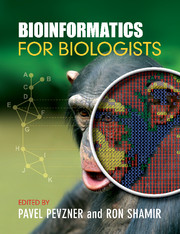Book contents
- Frontmatter
- Contents
- Extended contents
- Preface
- Acknowledgments
- Editors and contributors
- A computational micro primer
- PART I Genomes
- PART II Gene Transcription and Regulation
- PART III Evolution
- 9 Genome rearrangements
- 10 Comparison of phylogenetic trees and search for a central trend in the “Forest of Life”
- 11 Reconstructing the history of large-scale genomic changes: biological questions and computational challenges
- PART IV Phylogeny
- PART V Regulatory Networks
- REFERENCES
- Glossary
- Index
10 - Comparison of phylogenetic trees and search for a central trend in the “Forest of Life”
from PART III - Evolution
Published online by Cambridge University Press: 05 June 2012
- Frontmatter
- Contents
- Extended contents
- Preface
- Acknowledgments
- Editors and contributors
- A computational micro primer
- PART I Genomes
- PART II Gene Transcription and Regulation
- PART III Evolution
- 9 Genome rearrangements
- 10 Comparison of phylogenetic trees and search for a central trend in the “Forest of Life”
- 11 Reconstructing the history of large-scale genomic changes: biological questions and computational challenges
- PART IV Phylogeny
- PART V Regulatory Networks
- REFERENCES
- Glossary
- Index
Summary
The widespread exchange of genes among prokaryotes, known as horizontal gene transfer (HGT), is often considered to “uproot” the Tree of Life (TOL). Indeed, it is by now fully clear that genes in general possess different evolutionary histories. However, the possibility remains that the TOL concept can be reformulated and remains valid as a statistical central trend in the phylogenetic “Forest of Life” (FOL). This chapter describes a computational pipeline developed to chart the FOL by comparative analysis of thousands of phylogenetic trees. This analysis reveals a distinct, consistent phylogenetic signal that is particularly strong among the Nearly Universal Trees (NUTs), which correspond to genes represented in all or most of the organisms analyzed. Despite the substantial amount of apparent HGT seen even among the NUTs, these gene transfers appear to be distributed randomly and do not obscure the central tree-like trend.
The crisis of the Tree of Life in the age of genomics
The Tree of Life (TOL) is one of the dominant concepts in biology, starting from the famous single illustration in Darwin's Origin of Species to twenty-first century undergraduate textbooks. For approximately a century, beginning with the first, tentative trees published by Haeckel in the 1860s and up to the foundation of molecular evolutionary analysis by Zuckerkandl, Pauling, and Margoliash in the early 1960s, phylogenetic trees were constructed on the basis of comparing phenotypes of organisms. Thus, by design, every constructed tree was an “organismal” or “species” tree; that is, a tree was assumed to reflect the evolutionary history of the corresponding species.
- Type
- Chapter
- Information
- Bioinformatics for Biologists , pp. 189 - 200Publisher: Cambridge University PressPrint publication year: 2011

